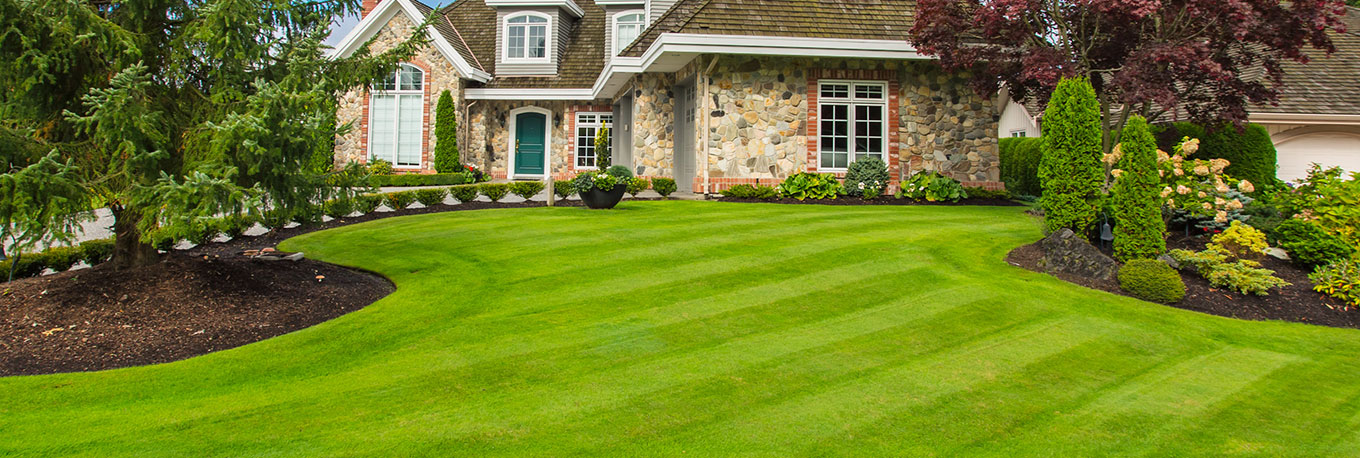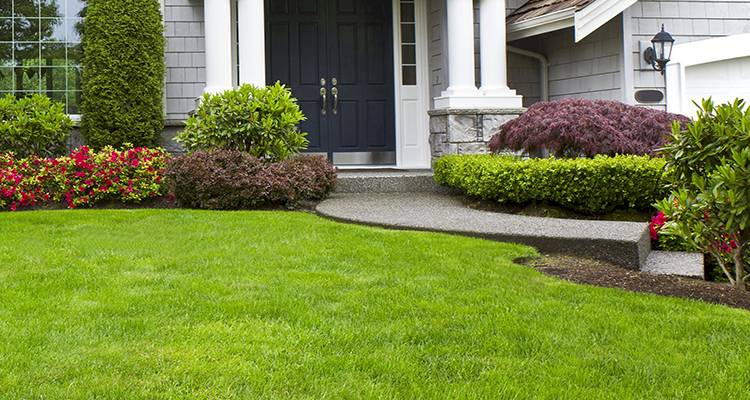How Can Landscaping Improve the Functionality of Your Yard?
For both homeowners and commercial property owners, landscaping isn’t just about flowers and shrubs.

Ever look at your yard and think, “Sure, it’s green, but what’s the point?” You’re not alone. A lot of people spend hours mowing grass, watering, and pulling weeds, only to end up with a space that looks fine but doesn’t do much. A yard should be more than just eye candy—it should actually serve you, whether that’s giving you a place to relax, entertain, or even cut down on maintenance headaches.
For both homeowners and commercial property owners, landscaping isn’t just about flowers and shrubs. Done right, it transforms the yard into a functional extension of the property. It can improve traffic flow, make outdoor areas safer, and even help with things like drainage and energy efficiency. The key is knowing how strategic landscaping choices affect usability.
Landscaping Enhances Outdoor Living
An expert landscaping and lawn care solution directly impacts how comfortable and practical a yard feels for everyday use. Whether it’s a small residential lot or a sprawling commercial property, smart planning turns wasted space into functional space.
Creating Spaces for Relaxation
Strategic landscaping allows you to carve out zones for sitting areas, patios, or shaded retreats. Trees, pergolas, and hedges can provide privacy, while pathways connect these zones seamlessly. This makes a yard more than a patch of grass—it becomes a destination for relaxation.
Designing for Entertainment
A yard designed with functionality in mind can support gatherings, cookouts, or even small outdoor events. Landscaping adds structure by separating social zones from quieter green areas, preventing everything from feeling jumbled together. A well-thought-out flow makes hosting easier and more enjoyable.
Fun fact: Studies show that people spend up to 30% more time outdoors in yards with designated seating and shaded spaces.
Landscaping Improves Property Flow
One of the most underrated aspects of landscaping is how it guides movement. Instead of people trampling across grass or creating muddy shortcuts, design features keep traffic organized.
Pathways and Access Points
Stone walkways, gravel paths, and pavers help move people from one area to another without damaging the lawn. This works equally well in a backyard or around a business entryway. When done right, pathways also enhance curb appeal by looking intentional and polished.

Driveway and Parking Integration
For commercial spaces, landscaping can improve how cars and pedestrians share space. Green dividers, plant buffers, and lighting guide traffic while making the area more welcoming. At home, edging and planting around driveways softens the look and prevents erosion.
| Landscaping Feature | Function | Benefit |
|---|---|---|
| Pathways | Direct foot traffic | Prevents lawn wear and tear |
| Edging | Defines borders | Keeps mulch and soil in place |
| Lighting | Illuminates routes | Increases safety at night |
Landscaping for Safety and Accessibility
Beyond beauty, landscaping plays a big role in making outdoor spaces safe and accessible for everyone.
Reducing Hazards
Uneven ground, poor drainage, or overgrown plants can create safety issues. Landscaping corrects these problems with grading, proper plant placement, and stable surfaces. This is especially important for walkways and entry areas.
Accessibility for All Users
A functional yard should be usable by everyone. Wide, level paths, ramps, and well-spaced plants make the area friendly for strollers, wheelchairs, and mobility aids. This is just as valuable in a residential setting as it is in commercial properties.
Fun fact: A level pathway with a gentle slope not only helps with accessibility but can also reduce water runoff issues.
Landscaping Helps with Drainage and Environmental Control
Water management is one of the least glamorous but most important aspects of yard functionality. Poor drainage leads to mud, standing water, and even structural damage over time. Landscaping prevents these headaches.
Drainage Solutions Through Design
Grading, French drains, and permeable surfaces redirect water efficiently. Planting beds and mulch also help absorb excess moisture, keeping the yard usable even after heavy rain.
Energy Efficiency with Plant Placement
Planting trees in the right spots shades windows in the summer and blocks wind in the winter. That means lower energy bills and a more comfortable property. Landscaping doubles as a natural energy solution without expensive equipment.
Low-Maintenance Landscaping for Busy Owners
Functionality isn’t just about how a yard looks or drains—it’s also about how easy it is to care for. Low-maintenance landscaping keeps the yard useful without demanding constant attention.
Planting Choices that Save Time
Choosing native plants, drought-resistant grasses, and hardy shrubs cuts down on watering and pruning. Mulching reduces weed growth, which means less time bent over pulling them. These choices add function by reducing labor.
Hardscaping as a Functional Feature
Patios, stone beds, and gravel sections eliminate the need for constant mowing while providing usable space. A well-balanced mix of plants and hardscape creates a yard that looks good but doesn’t feel like a full-time job to maintain.
Landscaping Increases Property Value
A functional yard isn’t just convenient—it’s valuable. Properties with well-designed landscapes often attract more buyers and tenants because the outdoor space feels like an extension of the property itself.
First Impressions and Curb Appeal
When people drive up, landscaping is the first thing they notice. Clean lines, intentional plantings, and organized flow create an immediate positive impression.
Return on Investment Through Usability
Unlike cosmetic upgrades, functional landscaping changes how the property is used every day. Whether it’s adding outdoor living areas, improving safety, or lowering energy costs, these improvements provide measurable long-term returns.
Common Question: Is Landscaping Really About More Than Looks?
Yes. Good landscaping goes far beyond aesthetics. It controls water, improves accessibility, reduces maintenance needs, and even saves money on utilities. A beautiful yard is nice, but a functional yard is a game-changer for how the property actually works.
Conclusion
Landscaping isn’t just about planting flowers—it’s about reshaping how a yard works for people. It transforms wasted space into living space, controls water, improves traffic flow, and keeps maintenance manageable. The benefits stretch beyond looks into safety, energy savings, and long-term property value.
A functional yard doesn’t happen by accident. It comes from intentional landscaping that balances beauty with utility. Whether residential or commercial, a well-designed yard improves daily life while protecting the property’s long-term value.
Visit us to learn more about landscaping: https://www.allseasonslandscapingla.com/?utm_source=backlink
FAQs
How can landscaping improve yard usability?
It adds pathways, seating, and designated areas for relaxation or play, making the yard more functional for everyday activities.
What landscaping features help with drainage?
Grading, French drains, and permeable paving redirect water and prevent pooling in the yard.
Can landscaping reduce energy costs?
Yes. Trees and shrubs placed strategically provide shade in summer and act as windbreaks in winter, lowering energy use.
What makes a yard low-maintenance?
Native plants, mulch, and hardscape features reduce the need for constant watering, mowing, and weeding.
Does functional landscaping increase property value?
Yes. A usable, organized yard adds curb appeal and increases the overall marketability of both residential and commercial properties.
Reviewer: Sophie Williams looked over this post and brought 7 years of field experience to her suggestions, helping ensure the content stays relevant to business owners and practical for everyday use.